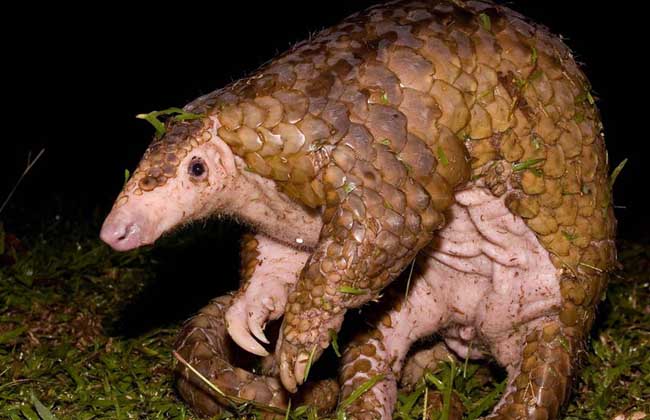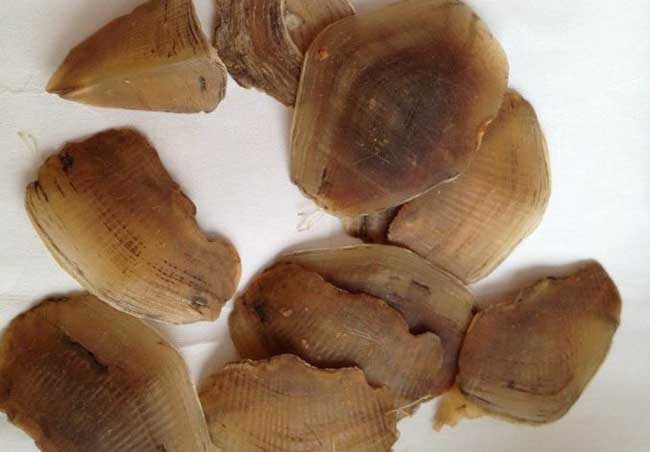Pangolin culture technology

Pangolin, a medicinal animal of the family Cyprinidae, is a key protected wild animal in China, also known as mud carp and stone dace. It is distributed in Anhui, Zhejiang, Fujian, Guangdong, Guangxi, Taiwan, Yunnan, Guizhou and Sichuan provinces south of the Yangtze River. In recent decades, pangolin tablets have been exported to Hong Kong, Macao, Taiwan, Southeast Asia and other regions and countries. At present, artificial pangolin culture has been successful, pangolin farming investment is less, but profitable, and for the country in exchange for a large amount of foreign exchange, is a promising aquaculture industry.
Culture value
The scale and meat of pangolin can be used medicinally. Scaly nails taste salty and cold. It has the function of reducing swelling and ulceration, searching wind and activating collaterals, and dredging breast under menstruation. Main treatment of carbuncle gangrene swelling, wind-cold-dampness arthralgia, amenorrhea, milk blockage and other diseases. Its meat taste sweet, astringent, warm. With insecticidal, blood, attack and dissipate blood stasis, the main treatment of arthralgia, amenorrhea and other diseases. Its blood is a specific drug for the treatment of gastric and duodenal ulcers.
In addition, pangolin meat is edible, the meat is fine and delicious, it is a delicacy at banquets and banquets.
Life habits
The pangolin is long and narrow in shape, it has 50 Mel 100 cm and weighs about 3 Mel 6 kg. The head is small and conical. The eyes are small, the snout is pointed, toothless, the tongue is slender and wormlike, the ear is small, the tail length is 10 Mel 30 cm, flattened, the back is slightly raised, the base is thick. The limbs are thick and short, the forelegs are longer than the hindlegs, the feet have 5 toes, the toes have strong claws, the front claws are longer than the hind claws, and the 3-toe claws in the middle of the forefoot are particularly long. Scales are eye-catching features, from the head, back, body side to tail are covered with imbricate horny scales, dark brown or grayish brown. Both cheeks, eyes, ears, chest and abdomen, lateral limbs and tail base, all have white and brown sparse bristles, with few villi. The female has 2 pairs of nipples on her chest.
Pangolins grow in tropical and subtropical regions, live in moist areas in foothills, hills, or plains, and especially like muddy lands mixed with pebbles. Dig a hole to live in. The cave is often built in the soil area. The hole is 2m deep and has a nest at the end. He often hides in caves during the day and goes out at night. When walking, put your forefeet on the ground and walk on the back of your claws. Able to climb trees, often using the tail as an accessory organ. Its vision is weak, when the enemy is frightened, rolled into a ball, with armor to protect the head and abdomen, so it is very easy to catch. Pangolin mainly eats termites, ants, bees and other small insects. When foraging, break part of the nest with the long claws of the forefoot, then insert the ant hole with a kiss and lick the ants with a sticky, retractable tongue.
Pangolins are usually male and female cohabitation, mating in April-May, delivery in December or January, breeding once a year, 1-2 per fetus.
Culture condition
The farm should be warm in winter and cool in summer, and the temperature should be 16 ℃ ~ 32 ℃. In the summer high temperature season, pay attention to shading and cooling, and keep warm in time in winter. According to the situation, culture methods such as pool type, closed type, cave type and wooden box type can be selected.
1. Pond farming: build a number of 20~40m2, high 50cm brick or stone ponds in the quiet part of the courtyard, which are rectangular or square in shape. The bottom and walls of the pool are covered with cement to make them strong and smooth to prevent pangolins from escaping. Several pangolin caves are built with stones in the pool, and a large amount of soil is piled on it, each separate from each other. There is a 5~10m2 activity place in the middle of the pool, on which a large amount of soil is accumulated and weeds and small trees are planted to create a good activity place. A large number of trees should be planted around the field to shade the sun. In the summer rainy season, there should be something to cover the rain, and leave a special drainage channel to prevent Rain Water from soaking the cave.
2. Closed aquaculture: it is composed of indoor 2~4m2 hut and outdoor 4~6m2 activity place. Both indoor and outdoor are cement floors, and there are caves for pangolins to live in. There are walls or barbed wire around the activity field, and the top of the cage is closed with barbed wire. Each cage can raise 2-4 pangolins.
3. Underground cave culture: the area can be 20-50 m2, surrounded by walls, the walls are hard and smooth, the wall height is about 2m, sandy soil ground, artificial caves, with rockery, grass and other natural living environment. You can keep more than 10 pangolins.
4. Wooden box cage: make a rectangular wooden box, the size of which should be more than 2 times the body length of the pangolin, divided into two internal and external rooms, connected by a round hole for animals to go in and out freely and rest.
Breeding technology
The natural mate of pangolin is generally more than one male and more than one female. When raising pangolins, it is appropriate to give priority to 1 male, 3 Mel and 4 females. When selecting and raising, you can first identify the male and female. There are two pairs of nipples in the female chest, but not in the male. Cultured pangolin can reproduce all the year round, but it is the most popular in spring and summer, giving birth to at least two babies a year, and two babies each, and can still get pregnant during the breeding period.
Newborn cubs are white-skinned, scaleless, breast-fed and have poor self-defense ability, so it should be forbidden to climb out of the hole. At the age of 1 month, the cub weighs about 200 mi 250 grams, and the scales gradually become dark brown. At the age of 2 months, they can go out with their mother to look for food. After 6 months of age, they weigh about 2 kg before living independently. Pangolins can be sold after raising for 1 year.
Daily management
1. Pangolins that have just arrived at the farm will generally refuse to eat. At this time, the method of irrigation should be adopted. Sometimes they will eat in 2-3 days, and sometimes they will eat as long as 7-10 days. There are glucose water, salt water, pig liver (should be crushed) soup, brook fish (should be crushed), eggs (should be broken) soup, etc., change at the right time every day.
2. Pangolin can be fed and fattened, and commercial pangolin can be caged for sale. The cage method is 1 cage, 1-2 times a day. A month later, the bait is placed in the cage to allow it to eat freely. The bait should be fresh, delicious, not too salty, and a sink should be set in the cage.
3. In the feed, properly add: ① multivitamins, ② trace elements such as zinc, iron, manganese, selenium, etc., ③ flavor food attractant in aphrodisiac traditional Chinese medicine and so on. It can increase appetite, accelerate growth and reproduction.
4. at ordinary times, the amount of feed that can be eaten can be increased day by day.
5. Pay attention to the diversification of feed and change it in time.
6. in the process of breeding, prevent the external noise for a long time, prevent escape, and keep the pool with long running water.
Related
- A course of planting techniques and methods on how to grow carrots
- How to plant the latest tulips?
- Is it better to pick tea in the morning or in the afternoon? When is the best time for tea to be picked? what is the third or fifth tea?
- Launch Yuanxiao Happy combination Haocha + Tea Yuan healthy Taste
- Penghu Tourism "Fireworks 20 Parade with You"
- 2022 West Lake Happiness holds "Digital Revitalization Voucher" and draws iphone13 and laptop.
- Banqiao Fuzhou social houses are designed to change start-up combined with police elimination to create a safe and livable environment
- The convenient measure of "mechanical weeding" in Xinbei has been abused and the Agriculture Bureau has imposed heavy penalties on the illegal land consolidation.
- Changgeng University Joins Hands with Four Memory Factories to Rescue Memory Talent Shortage
- The list of Taiwan's top 100 MVP managers is listed by the Director-General of the Farmers' Association of Sanxia District.



